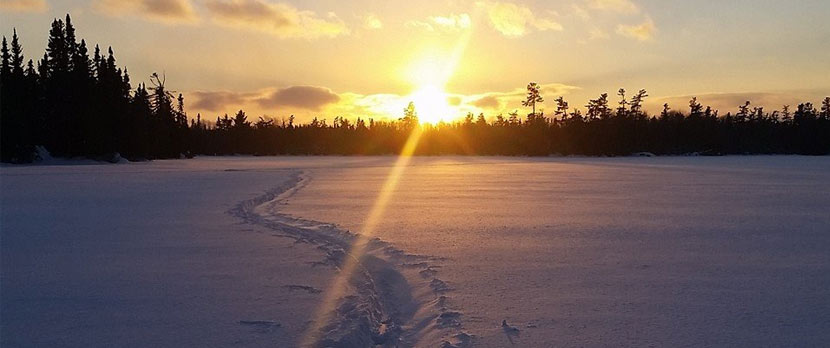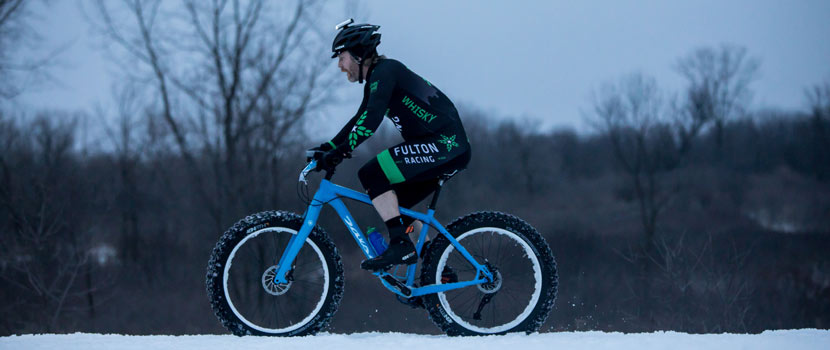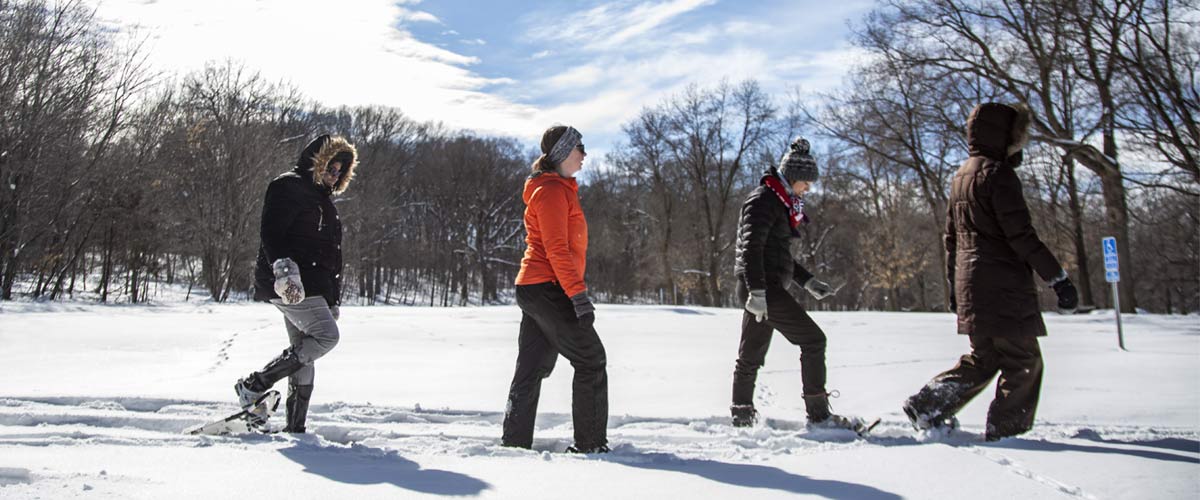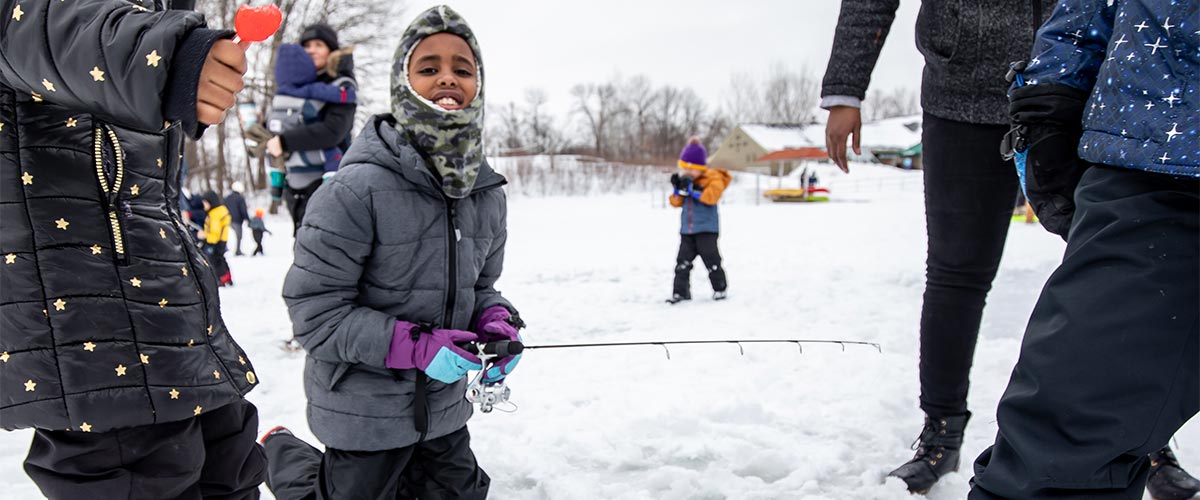
Note: This was a previously published post on how to dress for winter weather. We've added the above video for additional details on how to dress in layers. Enjoy!
Many studies have shown how being in nature can lift our spirits, stave off depression and generally lead to healthier lives. All of these things will be more important than ever as we wrap up a year that has heightened physical and mental health concerns for many.
This year, embracing winter will be important – and it can even be fun if you know how to dress! With the help of Nick Sacco from our Outdoor Recreation School, we are here to help you learn how to dress for success this winter. No matter what you’re doing or what the thermometer says, you can enjoy being outside with the right clothes – and you probably already have them.
Remember the Three Ws
At the core of dressing smartly for winter are three Ws: wicking, warmth and wind. When dressing for cold weather, layers are important, and the three Ws can help guide you.
The first layer you wear should be wicking. This will help keep you dry, which will help keep you warm. You don’t need fancy high-performance gear for this layer, says Nick. Think about a polyester or wool blend. “Yoga pants, running pants, long underwear and regular athletic pants all work great as a first layer,” says Nick. Avoid cotton because it doesn’t dry out quickly.
The second layer should add warmth. Consider something puffy and insulating, like a wool sweater, a fleece zip-up or a hoodie. This will help retain your body heat.
Finally, add something to break the wind. Most winter coats will take care of this. When you’re not in the depths of winter, a wind breaker or a rain jacket are good options.
The three Ws are a great guide for dressing for the weather, but in some cases you may want to add or remove layers. There are additional factors that can help guide your clothing choice.
Let Your Activity Guide Your Gear
Now you that you have the basics of dressing for cold weather down, the next thing to think about is what you plan to do outside.
Are you going cross-country skiing? Are you going for a hike? Are you building a snow fort in your backyard? Are you going birdwatching or ice fishing?
Each of these activities requires different levels of exertion. The more you plan to move, and the more rigorous your movements will be, the warmer you will stay. The warmer you are, the fewer layers you need.
For example, ice fishing requires very little movement, so it’s good to put on all the layers. Nick recommends packing some hot chocolate in a thermos, too. If you’re going for a tough snowshoe or cross-country skiing, however, wearing every layer will probably make you sweat. Two layers may be enough depending on conditions.
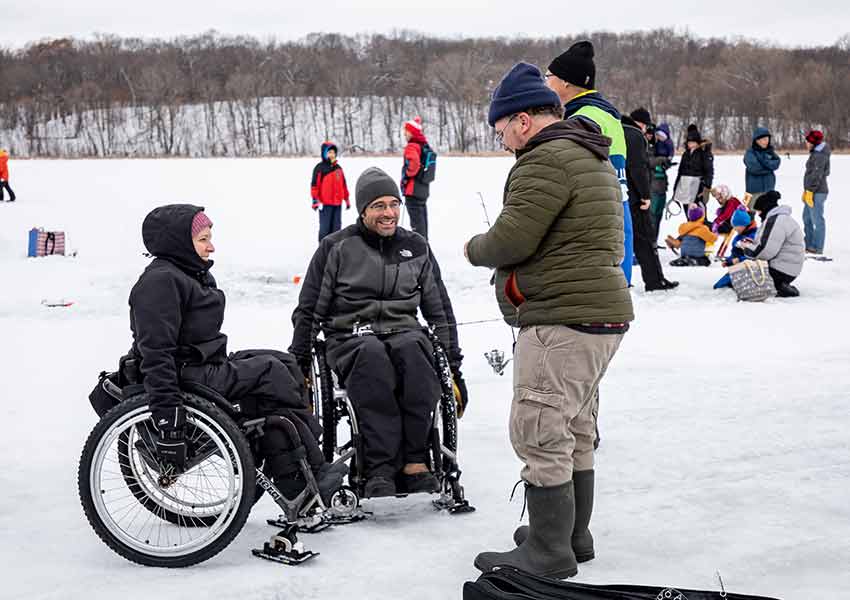
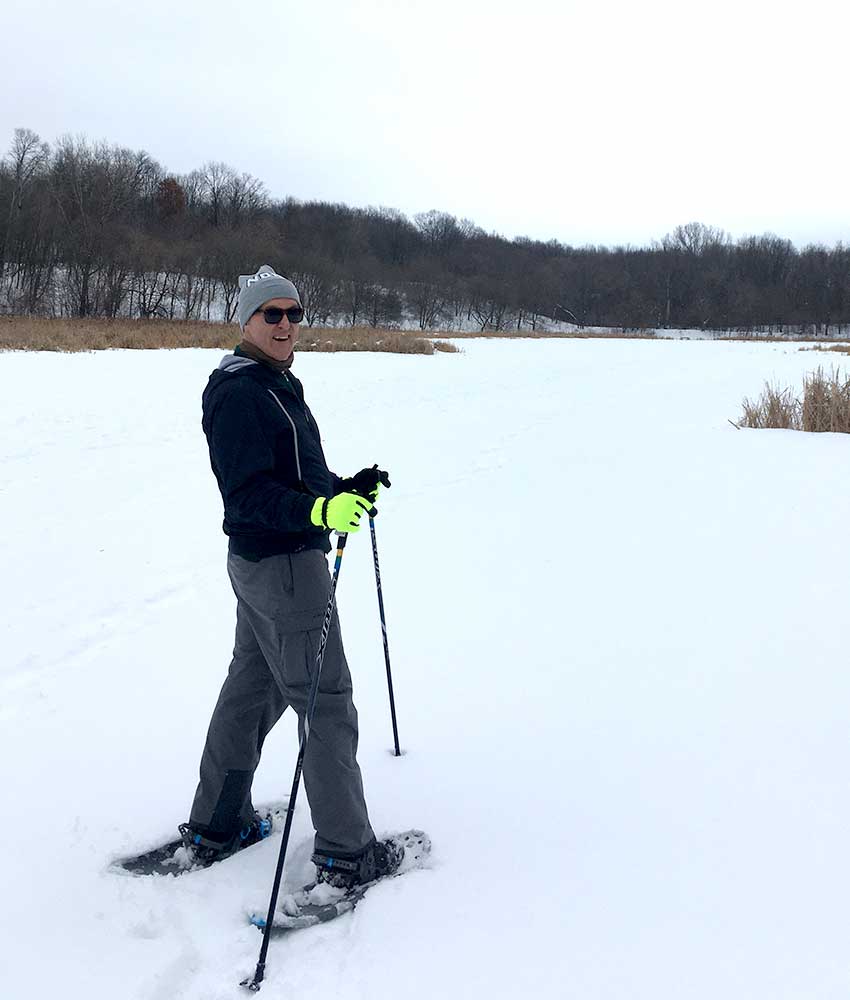
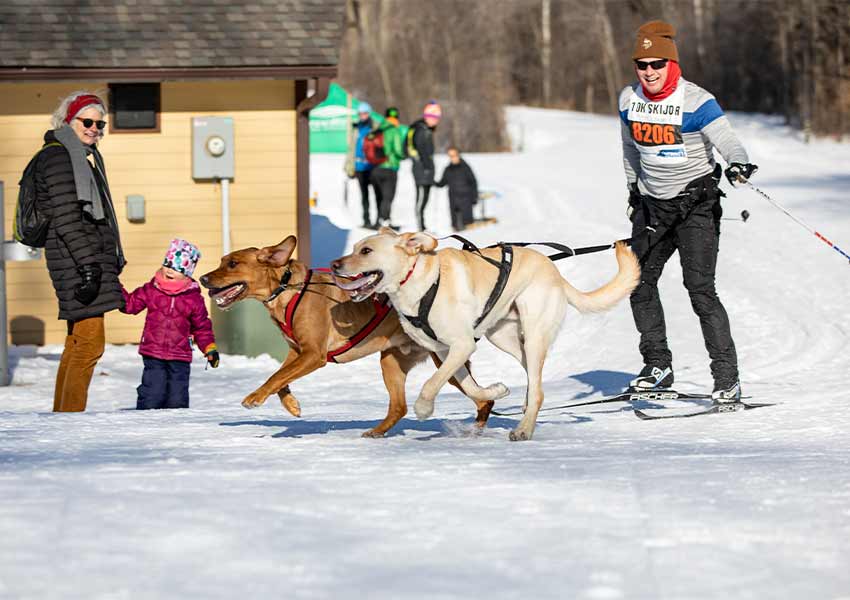
It can take some practice to figure out what works for you because everyone’s body warms and retains heat differently. “When you take a break, make sure to listen to your body,” says Nick. “Are you comfortable?”
When in doubt, lean toward overdressing – you can remove layers as you go. You can also “vent” yourself by unzipping the top of your jacket to release some heat if you get warm.
Consider the Conditions and Your Surroundings
This may seem obvious, but there’s more to think about than just the temperature – but it’s a good place to start.
“It’s easy to quickly check the high temperature for the day,” says Nick, “but Minnesota can have huge temperature swings even throughout a day.” The temperature at 3 PM may be much warmer than it is at 9 AM. Make sure you check for the time you’ll be outdoors.
From there, check the wind chill. Note whether it’s sunny or cloudy. Is it raining or snowing? If there’s precipitation or it’s windy, that outer “wind” layer will be especially important.
Also think about what your surroundings will be like when you’re outside. Will you be hiking on an open prairie or will you be snowshoeing through the woods? Will you be on a paved surface, ice or snow? Cold concrete can be colder to walk on than snow, and you’ll be more exposed to elements like wind and precipitation on an open field than in the woods.
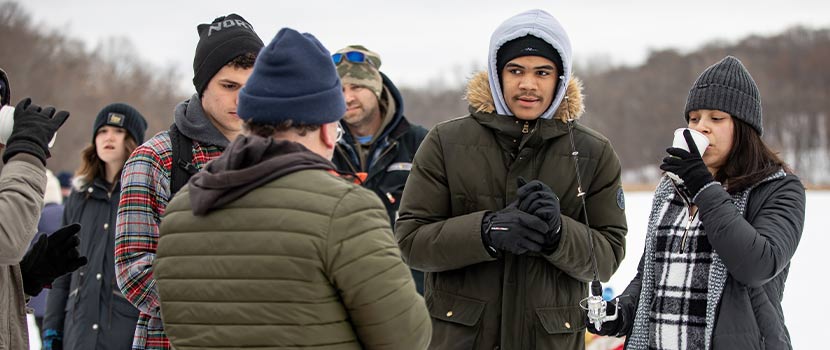
Specifics: Feet, Head and Hands
We’ve covered some basic layers for your core and legs, but your extremities deserve some attention too. Here are some tips from Nick.
Feet → Liner sock + wool sock + boot
“Expensive boots are nice, but what’s in between your foot and your boot is the most important,” says Nick. Good socks can keep your feet warm, even if you don’t have the best boots.
A liner sock (old dress socks work great) covered by a wool sock (wool mixes and synthetics work well, too) covered by your boot will give you optimal warmth on a cold day.
If you have multiple pairs of boots, think about what you’ll be doing when choosing which pair to wear. If it’s wet, grab rain boots or waterproof boots. For hiking, something that’s lighter weight is good, and for sledding, your heaviest boots will work well.
Head and Neck → Hat + neck gaiter or scarf
“Your head is like a chimney,” says Nick. “You will lose heat very quickly without a hat.”
Again, avoid cotton when choosing a hat. This shouldn’t be tough since most knit hats are made of acrylic, polyester, wool or a blend. In a pinch, use your jacket or sweatshirt hood and pull the strings tight. Any head covering is better than no head covering.
And don’t forget about your neck! A scarf works great. Nick prefers a neck gaiter – a piece of fabric sewn into a continuous tube that you can slide over your head to cover your neck. “Neck gaiters are great because they’re versatile,” he said. “You can use it to cover your neck or your ears or pull it up over your nose and chin.”
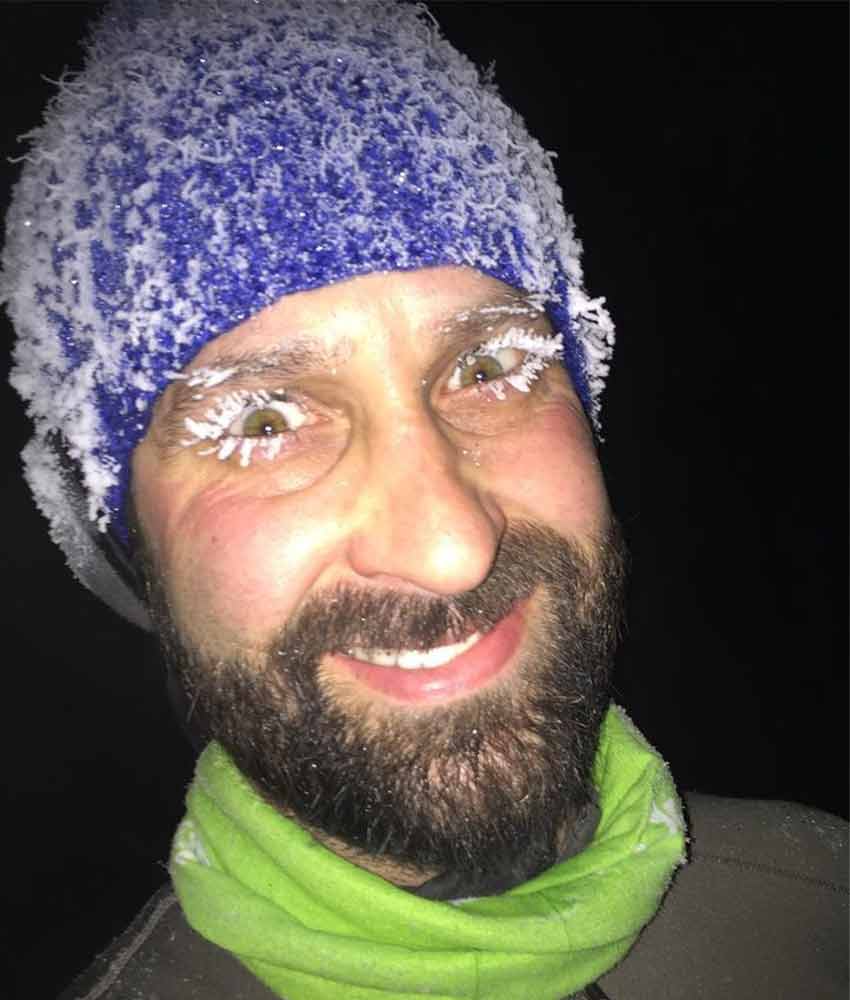
Hands → Liner glove + waterproof mitten + muff
When it comes to keeping your hands warm, mittens will almost always be your best option, says Nick. They keep your hands much warmer than gloves. The exception might be a high-exertion activity like cross-country skiing, where your body is naturally going to be warmer because you’re working harder.
Going back to our three Ws, Nick recommends waterproof mittens or gloves. He likes leather mittens but you can also go with nylon, Gore-Tex or another waterproof material.
When it comes to your hands, layering is also an option. “When ice fishing, I wear fingerless gloves under my waterproof mittens so I can easily use my hands when I need to.” A muff can also be helpful for extra warmth if you’re standing still outside.
Go Forth and Explore!
Dressing for the weather does not have to be difficult or expensive. In fact, most of what you need is probably already in your closet. It’s all about layering and figuring out what works for you. Let the three Ws be your guide as you explore what makes you comfortable outdoors.
And as we head into winter, remember that being outside is good for you. The initial chill on your face when you step outside can give way to exciting new adventures and new ways experience your favorite places – whether it’s snowshoeing your favorite hiking trail or ice fishing off your favorite swimming beach. Embrace it and enjoy it!
About the Author

Erin Korsmo is the Web Coordinator at Three Rivers Park District. Her background is in journalism and content strategy. Erin has a longstanding passion for the outdoors. As a child, she went camping every summer and volunteered to count loons for the DNR with her family. Erin is a Minnesota Master Naturalist in the deciduous forest and prairie biomes. Outside of work, she enjoys hiking, kayaking, identifying and photographing plants and wildlife, crafting, and spending time with her husband and cat.
Related Blog Posts
Embracing Winter: How to Get Comfortable with the Cold
By: Erin Korsmo
Why should we be outside in the winter? Learn the benefits of getting outdoors and how to be outside comfortably in the cold, and find inspiration for embracing winter this season.
Tips and Tricks for Winter Biking
By: Anders Hanson
There are countless barriers (both perceived and actual) that prevent people from biking in the winter, but ultimately most of us already have much of the gear that makes winter biking comfortable, practical, fun, and safe. Learn some tips to overcome winter conditions and make winter biking seem less daunting.
Top 10 Parks for Snowshoeing
By: Andrea Breitung
Snow conditions right now are the best we've seen in years. Learn more about the top 10 places to snowshoe in Three Rivers and explore some trails near you before the snow melts.
